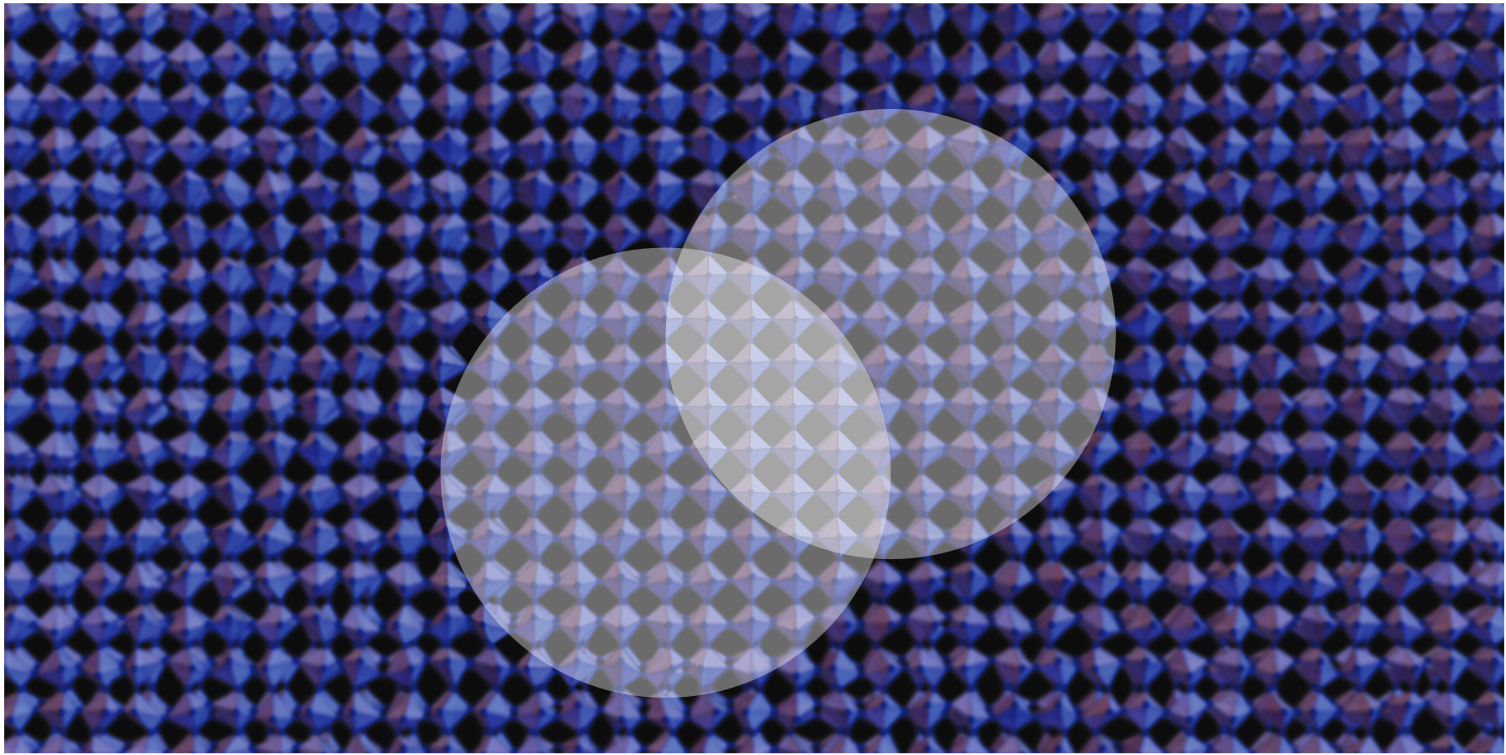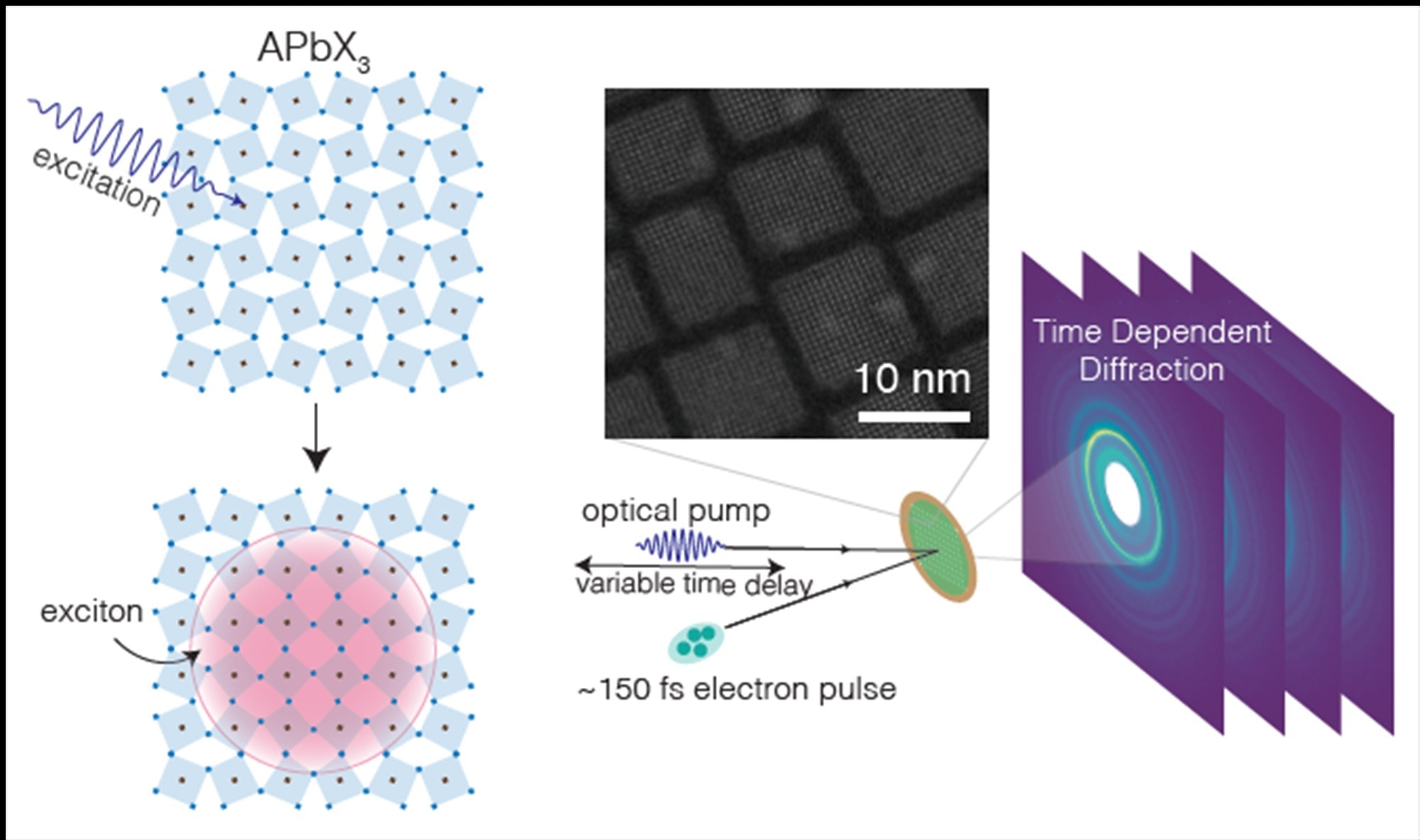A new study, published in early November in Nature Physics, details a breakthrough in understanding the dynamics of halide perovskites, revealing insights crucial for advancing optoelectronics technologies. The team behind the development is composed of researchers from ETH Zurich, Stanford and Empa.

Excited electrons. Image Credit: ETH Zurich, Nuri Yazdani
Halide perovskite minerals are integral to the functioning of solar cells and quantum technologies due to their exceptional optical properties. The results of this research have potential implications for commercial industries such as renewable energy and electronics, providing deeper insight into the atomic movements within halide perovskites.
Capturing Nanocrystal Dynamics in Real-Time
Perovskites, sharing the crystal structure of calcium titanate (CaTiO3), exhibit unique optical and electronic properties due to the strong coupling between excited electrons and phonons (vibrations of atoms in a crystal) upon light absorption.
Often one can treat the average position of each atom inside a crystal as fixed, but that is no longer possible when an optical excitation of an electron leads to a large reorganisation of the crystal lattice.
Dr. Nuri Yazdani, Lead Author, Department of Information Technology and Electrical Engineering, ETH Zurich
Understanding the electron-photon interaction in these materials is crucial, especially when optical excitation leads to significant rearrangement of the crystal lattice.
To explore this phenomenon, the researchers focused on formamidinium lead bromide, a type of perovskite that was synthesized at Empa. Utilizing the ultrafast electron diffraction beamline facility at the Stanford National Accelerator Laboratory (SLAC), they observed the nanocrystals, about 10 nanometers in size, with electron pulses lasting a mere hundred femtoseconds. This technique, akin to observing light emerging from a double slit, allowed the team to detect minute changes in the crystal structure.
By utilizing a key feature of the SLAC beamline, ETH researchers were able to capture snapshots of the crystal structure during and after photon absorption.
Furthermore, by synchronizing the laser-generated photons and electron pulse, and varying the photon's travel distance, they could control the arrival times relative to the electrons. Analyzing these snapshots over hundreds of picoseconds revealed how the lattice deformation, induced by photo-excited electrons, evolved over time.

Photon adsorption. Image Credit: ETH Zurich, Nuri Yazdani
Surprising Findings
Contrary to expectations of lattice deformation reducing symmetry, the researchers observed an increase in symmetry due to the excited electrons straightening the skewed crystal structure. Model calculations indicated that multiple excitons (bound pairs of electrons and holes) cooperated in this straightening process, reducing their total energy and creating an attraction between them.
With this new understanding, perovskite properties can be tailored for more specific applications. For instance, Yazdani suggests that perovskite nanocrystals for next-generation TV screens could be engineered to reduce electron-phonon coupling, thereby enhancing the emitted light's spectral quality. Moreover, the attractive interaction between excitons, which enables current flow in superconductors without loss, might be harnessed to improve electron transport in perovskite-based solar cells.
Through this investigation, the team demonstrated how advanced nanoscience techniques can be vital in uncovering the complex behaviors of materials essential to future technologies. These behavioral insights contribute to the advancement of halide perovskite devices and optoelectronic applications.
References
Yazdani, N., Bodnarchuk, M.I., Bertolotti, F., Kovalenko, M.V., Wood, V., Lindenberg, A.L. et al. (2023) Coupling to octahedral tilts in halide perovskite nanocrystals induces phonon-mediated attractive interactions between excitons. Nat. Phys. 10.1038/s41567-023-02253-7
Rainò, G., Yazdani, N., Wood, V., Kovalenko M.V., et al. (2022) Ultra-Narrow Room-Temperature Emission from Single CsPbBr3 Perovskite Quantum Dots. Nat. Commun. 13, 2587. 10.1038/s41467-022-30016-0